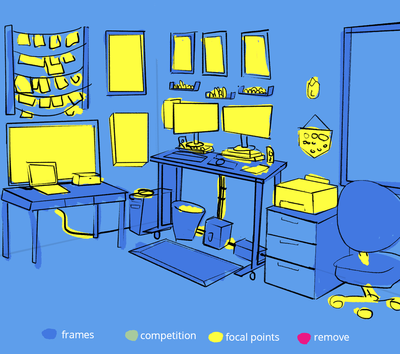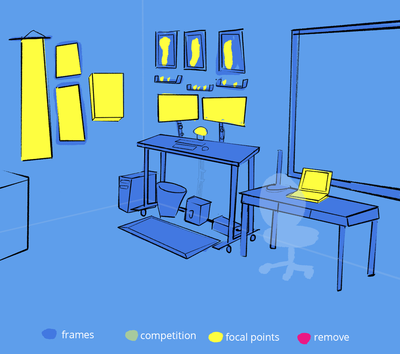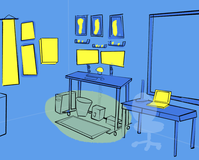|
5/2/2018 0 Comments Negative SpaceFor the duration of this post, I will be referring to negative space interchangeably with "breathing room," as the latter term feels more positive (!) and applicable. Focal Points in DesignNegative space is an essential concept in many different art forms, including graphic design, interior decorating, photography, film, and illustration. People are drawn to visuals that give them a clear sense of where to look. Visuals that demand attention over their surroundings are called focal points, and they are the center of activity and attention. Terminology I Use
Some of my favorite focal points:
Inverse from negative space + focal points is "chatter" - information that has too many facets to be digested concisely. Some of my least favorite forms of chatter:
"Breathing Room" AppliedThe concepts of negative space, focal points, and chatter can come in handy to determine what we find most important when arranging our lives. Try to think of your own examples for each as you read along! Homenote: When it comes to the home, the right combination of focal points and negative space can make you feel comfortable in each room. Breathing room can also be helpful when considering your closet. It is visually soothing to leave room for all of your belongings so they can rest without pressure. WardrobeNote: Especially for fashion, one person's focal point may be another person's chatter. Also, having comfortable clothing is a great way to minimize your sensory experience and focus on the "statement" of your outfit. Building up a wardrobe of clothes you feel both comfy and good in is the best way to minimize your time spent worrying about what you wear. MindNote: Meditation is an obvious example of breathing space for your mind. However, giving yourself moments to daydream, regroup, or let your mind go blank can be a helpful form of mindful negative space. Journals and lists can help unload your mind onto paper and remove the burden of remembering everything. Goals
Note: This one is very...abstract, but I feel like it works just as well as the other themes. We tend to function better when we have only a few strong and clear focuses in our lives and we give them the space to breathe. Let's use focal points to tidy up a room!Go into a room and observe the path your idle eye makes. What does it stop on first? Where does it linger? Is there something that is a focal point that you'd rather not be? Or something that has faded into the background that you wish you could appreciate more? Picking a focal point for a room or a wall can help you simplify your vision. PROCESS
EX: My Office
Before and After! Office Tidy 2: Electric Boogaloo
ConclusionI'm not making this blog because I think I have it all figured out. Heck, my office was still a long way off from my ideal layout when I moved in about a year ago! It was still far off only a few weeks ago! Only recently have my tastes changed to prefer minimalism, so anyone reading this is along for the journey. Negative space is nothing new, but it was fun to figure out how to apply it to more abstract parts of my life.
0 Comments
Leave a Reply. |











